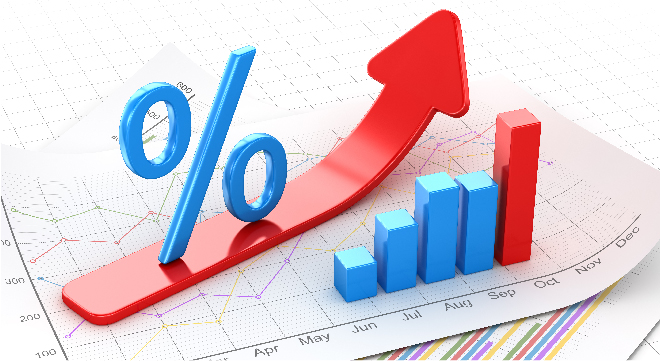As expected, the SA Reserve Bank’s Monetary Policy Committee (MPC) on Thursday raised the repo rate by 25 basis points to 4%. However, what surprised some market analysts is that the SARB’s quarterly projection model (QPM) indicates that rates will increase more slowly than at the pace laid out at the MPC’s meeting in November.
Thursday’s hike, only the second in three years, was virtually certain after the inflation rate for December came in higher than expected at 5.9%, which is near the top of the SARB’s target range of 3% to 6%.
The rate hike means that the prime lending rate of commercial banks will increase to 7.5%.
Jeff Schultz, senior economist at BNP Paribas South Africa, said the QPM now indicates something closer to five 25 basis point rate hikes in 2022 and three 25bp hikes in early 2023.
Importantly, a 50bp rate hike was not discussed, further solidifying the view that the SARB will, for the time being, adopt a “gradual normalisation” approach, said Schultz.
BNP Paribas warned, however, that four more 25bp hikes this year were “probably a minimum requirement” in light of tighter monetary policy by the US Federal Reserve and the upside risks to domestic inflation. “We think that this probably marks the low point in the SARB’s QPM implied repo rate path, with the only way up from here.”
The SARB has adjusted its headline inflation forecast for this year to 4.9%, up from 4.3%, and at 4.5% next year and in 2024.
However, SARB governor Lesetja Kganyago said in the MPC’s statement there were risks that make it likely these estimates will have to be adjusted upwards. These risks are rising global producer and food prices, a higher oil price, rising electricity prices, higher domestic import tariffs, stronger services inflation, and higher wage demands.
In December, US inflation hit 7%, a 40-year high. Federal Reserve chairperson Jerome Powell has acknowledged that the US economy is suffering from far more persistent inflation than he expected. Therefore, the markets are pricing for aggressive rate hiking cycles and quantitative tightening.
Kganyago said a “particular risk” to the domestic inflation outlook was the possibility of a faster normalisation of global policy rates than is currently built into the forecast, which assumes some rate hikes to begin around June 2022. Added to this is the risk that quantitative tightening will occur more quickly than previously expected, leading to stronger capital flow reversals from riskier assets, such as emerging market debt.
“However, we have previously communicated that should the MPC decide to raise borrowing costs to contain prices, the changes will most likely be small and gradual”.
Forward rates price for 6%
The South African forward rates market has been pricing 12-month money market deposits at close to a 6% interest rate. This is at variance with the SARB’s latest QPM, which suggests the repo rate will be closer to 5% at year-end.
Allan Gray portfolio manager Thalia Petousis said the “disconnect” between the SARB and the market can be explained by weak consumer spending, as evidenced by low core annual inflation of 3.4%. Core inflation strips out supply-side prices such as food and fuel.
“As the SARB continues to emphasise, the only way to anchor inflation and continue to be supportive of South Africa’s consumer recovery is to move gradually. There are several important local factors, like high administered electricity prices, that are outside of the SARB’s control. Increasing the supply of energy in South Africa will arguably better anchor inflation than rate hikes can,” said Petousis.
Time will tell whether the forward rates market or the SARB’s model gives a better estimate of where we ultimately land, she said.
Adriaan Pask, the chief investment officer at PSG Wealth, said PSG remains of the view that if the MPC decides to raise rates, the increases will most likely be small and gradual.
“A 25bp hike every few months will not be a shock for economic growth or the local market. Market participants will continue to be sensitive to any developments relating to unemployment, wages, inflation and interest rates. Therefore, investors should also expect heightened volatility over the next few months.”
Growth forecast for 2022 unchanged
Meanwhile, the SARB maintained its GDP forecast for 2022 at 1.7%, with the deceleration in growth from the past year a result of the fading rebound from the pandemic, coupled with a slowdown in export prices and slower global growth.
Kganyago said the bank now expects growth for 2021 to come in at 4.8%, down from 5.2% forecast at the MPC’s meeting in November. The downward revision was due to the damage inflicted on the economy by the July unrest, cyberattacks and strikes.
The SARB is expecting GDP growth of 1.8% next year and 2% in 2024.



